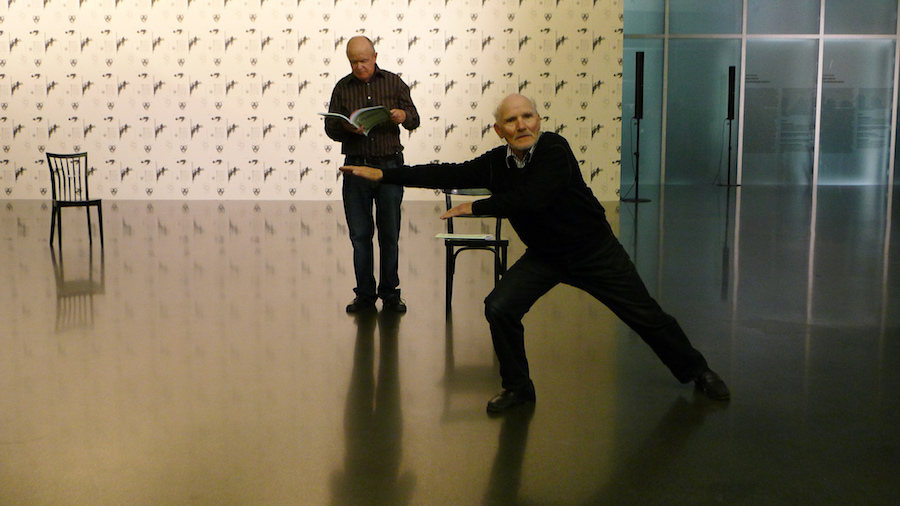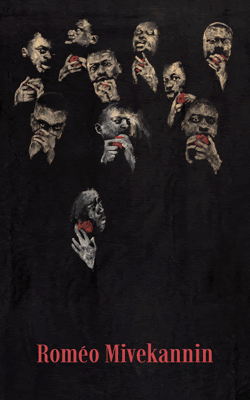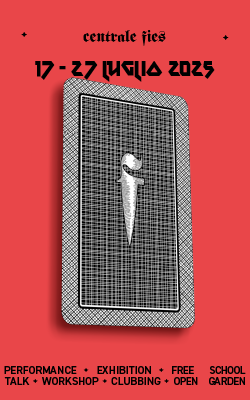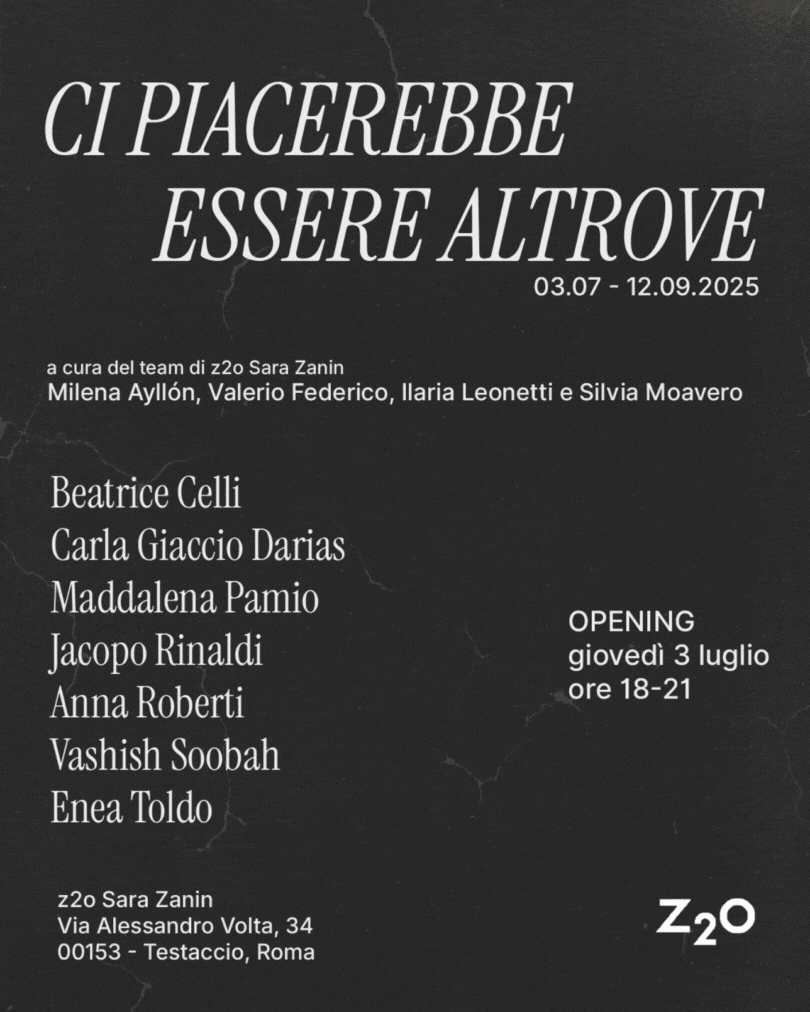[nemus_slider id=”60461″]
For Artissima 2016 edition PER4M evolves into a project curated by the dutch collective If I Can’t Dance, I Don’t Want To Be Part Of Your Revolution (Frédérique Bergholtz and Susan Gibb), created to explore the transformation of performance and its typologies in the context of contemporary art. The collective has developed a groundbreaking programme conceived specifically for the context of the fair.
In the programme involves seven artists, presented by seven galleries: Juliette Blightman (Isabella Bortolozzi, Berlin ), Dina Danish (Barbara Seiler, Zurich), Tim Etchells (VITRINE, London, Basel ), Dora García (Ellen de Bruijne, Amsterdam), The Mondrian Fan Club – David Medalla and Adam Nankervis (Enrico Astuni, Bologna), Ruth Proctor (Norma Mangione, Torino), Marinella Senatore (Laveronica, Modica).
In the following lines Bergholtz and Gibb answer some questions about the collective and their Artissima’s PER4M section.
ATP: How was your collective born? How did you meet?
IICD: If I Can’t Dance, I Don’t Want To Be Part Of Your Revolution was founded in 2005 in the Netherlands by three curators: Annie Fletcher, Tanja Elstgeest and myself, Frédérique Bergholtz. Each of us had been individually approached to curate a visual arts program in the context of a theatre festival in the Netherlands. Upon realising this, we decided that instead of working in competition with each other, it would be a good idea to pool our resources and collaborate together. From this we collectively took up the challenge of thinking about visual art within a context that embraces performance-based practices such as theatre, music and dance. To do this we borrowed the model of collaborative working from the theater as a starting point, and invested in an elaborated program that saw commissioned artists develop projects through their very enactment, at each event and location over time. We named this first program If I Can’t Dance, I Don’t Want To Be Part Of Your Revolution. The title has since stuck and become the name of our collective. Along with all of the founders, If I Can’t Dance has also been an important development point for a number of curators and producers who have passed through across its ten years and counting. These include Tanja Baudoin, Maaike Gouwenberg, and Vivian Ziherl. Susan Gibb and I are the curators of the current program, Edition VI – Event and Duration (2015—2016).
The anarchist Emma Goldman’s famous quote “If I can’t dance, I don’t want to be part of your revolution” is a source of inspiration for us, as it suggests that a search for agency and potential for empowerment can be found in all elements of life. It is not something that can be regulated to a firmly cordoned-off arena named the political. It is embedded and reflected in art too. This quote is a paraphrase of Goldman’s original statement, with this particular wording becoming popularized during the feminist movements of the seventies. It appeared on t-shirts, buttons, and bumper stickers, as part of the renewed interest in historical feminist practices. Such an interest in feminist legacies and their potentials is the other red thread, alongside performance, that runs through all that If I Can’t Dance does, its structure and program choices.
ATP: You say about your way of working that it’s like contemplation interrupted by action, as you intend actions like moments that enable public exchange: what kind of exchange did you receive in the past, and what do you expect from Artissima’s audience?
IICD: At If I Can’t Dance we aim to be attentive to the different times that constitute the production and reception of performance.
Within this interest we characterize our activity as being typified by an ongoing process of research—of ‘contemplation’—segmented by moments of presentation at subsequent venues enabling public exchange—opportunities for ‘action’.
This is most easily explained by our Edition structure, which sees us commission artists and researchers to develop and produce a major new work over a two-year period. We work very closely with the artists and researchers on these productions, with each commission involving periods of research and experimentation in order for the ideas to take form. Within each of the two year Editions, public presentations of works are matched to the tempo that is required for each of the productions and to what each moment of public exchange can offer the artist and the development of their work. For some artists multiple presentations are valuable and can include showings of the work in progress or the production of a number of new works, and for others it involves a longer period of research and development in the studio before something is presented. In this way each of the projects follow their own individual trajectory, with us allowing room for diversions, u-turns, reconsiderations and pauses when required.
The two-year Editions are also complemented by a field of research, which is defined and pursued through If I Can’t Dance’s ongoing curatorial research into the typology of performance and performativity in contemporary art. So far these fields of research have included: Theatricality and the Live Moment; Feminist legacies and their potentials in contemporary art; Masquerade; Affect; Appropriation and Dedication; and currently, Event and Duration. We make public our research into these themes through a monthly Reading Group in Amsterdam and three sister cities—New York, Sao Paulo, and Toronto. The Reading Groups lead to the publication of a collectively complied reader at the end of each Edition.
Our attention to these quieter more introverted moments of production and thinking, can also be seen as a defining feature of the critical position within the field of performance and contemporary art that we try to hold. This is particularly as today ‘performance’ permeates our lives on many levels, such as the pressures of self-performance or economic performance, and has become intimately tied to capitalist logics of visibility, scale, productivity and value, which often follow a linear trajectory of growth. And while we do aim to nurture the development of artists and their works, we are trying to do this in a way that is open to multiple registers of what this could be, to allow for questions, failures, the unassuming and tentative, as well as the spectacular and the self assured. Maybe you could say that it is an argument that giving time—not simply taking or occupying it—is an important part of what performance is.
As we normally produce new performance related works, for Artissima we have curated a programme of mostly existing performances (Dina Danish and The Mondrian Fanclub will produce new work) though the term ‘new’ is again nuanced with performance, as in each iteration a performance comes to live again and potentially changes.

ATP: Could you tell us If I Can’t Dance’s most intimate definition of performance?
IICD: A deep interest in the potentials of the body and the operations of time are probably the two defining aspects of performance that drive our specific and ongoing interest in performance.
The body is such rich material to work with, and can be seen from the uniqueness of each individual body, and through movement and speech, and its interaction with objects. Not only is performance a time-based medium; its relationship with time (also how a performance is documented) is an important constituent element of its concept and meaning. The borders of a performance are open and porous and the question is how, and if, it can be fully possessed. These fundamental concerns and qualities of performance are challenging to reflect upon in the context of an art fair.
Performance is the focus of our practice also because we enjoy the moment of the live encounter, and the relationship that this engenders between the artist, artwork and the audience. We often get to see the audience experience the works we commission, and to receive their thoughts and feedback in real time. Broadly, you could say our interest in performance is an aspiration for potentiality, actualization and transformation.
On performance, professor of Performance Studies Peggy Phelan once said, ‘Live art performance remains an interesting art form because it contains the possibility of both the actor and the spectator becoming transformed during the event’s unfolding.’ Having taken this potential as inspiration for If I Can’t Dance from the start, and given that it continues to motivate us today, we hope that this year’s programme of performance works for PER4M offers such an opportunity too by opening up the multiple potentials for exchange that this unique artistic form can offer.
But with this in mind, all of us at If I Can’t Dance also share a love of many other artistic mediums such as painting, sculpture, textile, and film, which is what also makes performance a perfect focus; it is an open field of encounter that enables us to not have to make such disciplinary divides or commitments. It is a meeting place for many forms, a trans-disciplinary space.
ATP: Fair’s location is huge and there will be a lot of different visitors: how will you manage spaces where things will be happening? In your research you want to explore the evolution and typology of performance and performativity in contemporary art: on that basis, how do you choose artists and performances for Artissima?
IICD: When If I Can’t Dance was approached to compose the program for the third edition of PER4M at Artissima, it was with great interest that we accepted the invitation, as it offered us the opportunity to reflect upon the presentation of performance practices in the art market—a relatively unexplored context for us previously. For the program we were asked to select new and existing works by artists represented by participating galleries in the fair. The artists we will be presenting are Juliette Blightman, Dina Danish, Tim Etchells, Dora García, The Mondrian Fan Club, Ruth Proctor and Marinella Senatore.
The movement through time and across contexts that typifies If I Can’t Dance’s curatorial practice has also informed the shape of the program for PER4M, as has Torino’s rich history and cultural life, as evidenced by its architecture and public spaces. This year the PER4M section will unfold across numerous sites that stretch from the dedicated PER4M section in the fair, to the passageways connecting the gallery booths, to outside in the surrounding industrial complex of Lingotto Fiere, and even further still, to public spaces in Torino’s city centre. Many of the performances also invite participation, and will see guests to Artissima and community members from Torino taking part in the realisation of the works.
This multi-site staging of the program has also been developed in response to the temporal and spatial requirements of each of the proposed works, and through dedicated consideration of each artist’s practice. The works presented vary in duration: from impromptu actions, through group choreographies performed in repetition, to durational pieces that stretch over a day. In this way, each work plays purposefully with the scale and rhythm of what a performance can be, serving as an important reminder that time is measured by more than just the hands of a clock – something important to note when ‘the live’ or life is involved. And while the program was selected on the merit of each artist’s work and without a set theme in mind, when looking over the final constellation of the program, the idea of the score, of notations or of language that prompts action – be that spoken word, movement or both – can be seen as a recurring interest.

ATP: Could you anticipate us something about any performance?
IICD: Performance is the focus for UK-based Tim Etchells (b. 1962, UK), who has pioneered a practice that moves across contexts and media with an admirable agility, and of which he has written: “[…] my work is often concerned with liveness and presence, with the unfolding of events in time and place. The place where ‘events’ happen could be an LCD monitor or a computer screen, a stage, the space of a page, a gallery, a found site, a street or some private space – a room or a car for instance – in which a person might listen to the audio or read a text. In each work or project I seek to make something happen – stage an encounter, unleash a process, set an event in motion – which ultimately explores the dynamic relationship between the work and the viewer.” In our program for PER4M, Etchells presents Work Files (2016), an iteration of his ongoing series of improvisations in gallery spaces. Appearing alone onstage in an unadorned manner, with a fistful of notes in hand, across the 30-minute duration of the piece the artist reads his notes aloud, intercutting and remixing them as he goes. Made up of accumulated fragments of overheard conversations, quotations from newspapers and web pages, and ideas for performances, to name but a few, Etchells loops and repeats individual lines from these notes, in an editing process designed to create new dialogues and combinations. In doing so, he draws attention to spoken language – its rhythmic, textural and musical properties, as well as its semantics.
For Dora García (b. 1965, Spain), language is a space for action; it is a translator and constructor of reality, as well as the structure of the unconscious. In her conceptual works – which include texts, photographs, films, performances and installations – she challenges the boundaries between reality and representation; improvisation and staging; artist, work and audience. These interests are evident in The Sinthome Score (2013), which García presents in our PER4M program. The work is centred on a printed score that includes a transcription (translated into English) of the French psychoanalyst and psychiatrist Jacques Lacan’s twenty-third seminar, ‘Le sinthome’ (1975–76, meaning symptom), and ten sets of movements drawn by the artist to accompany each chapter of the score. Two performers take on the role of reader or mover, respectively, and activate the score by playing it for each other. The performers are free to determine the rhythm, cadence and speed of reading and movement, to choose the chapter they wish to start with, and if they want to swap roles – the score being formulated so that it can be performed by anyone, without previous training or rehearsal. As Gracía has said, ‘The best way to understand the function of the score is to compare it to the books of psalms in a church: people take them, use them to sing and leave them back where they found them.’
The preoccupation with language and structure that typifies conceptual art is also present in the work of French-born Egyptian, and Amsterdam-based artist Dina Danish (b. 1981, France), who usurps this tendency through her interest in humour, misunderstanding, mistranslation and superstition. Linguistic curiosities, be they pronunciation, correction or stuttering, and general structures – units, or standards such as tongue twisters, counting and poetry – all offer material and strategies for the artist to make works that are often absurd or casual.
Founded in New York City in 1992, the Mondrian Fan Club is an ongoing collaboration between Philippine-born David Medalla and Australian-born Adam Nankervis. Each living nomadically around the world, when the artists meet in different locales they create collaborative performances, installations, drawings and impromptu photographs and videos related to the biography and legacy of the Dutch modernist painter Piet Mondrian. Their actions are often transitory and ethereal in nature, creating a certain mystery and a touching fleetingness. In our program for PER4M the Mondrian Fan Club continue their ongoing global graffiti work, which entails the creation of a series of large-scale letters. A previous example includes the letter M being temporarily written in the sky above Broadway in Manhattan, with the action being inspired by Mondrian’s famous painting Broadway Boogie Woogie (1942–43). At various impromptu moments and at places in and outside the fair – new letters appear that contribute to a sentence Medalla and Nankervis have been formulating since the exhibition The Secret History of The Mondrian Club at Gee Street, London, in 1994.
Berlin-based Juliette Blightman’s (b. 1980, UK) everyday life – the things she sees, the places she visits, and friends and people she encounters along the way – provides the wellspring for her work. In this way her artistic output is a personal and direct reaction to her surroundings, and finds form as drawings, paintings, photographs, correspondence, weather, silence and film. Whether an audio clip, image or film – recorded directly from life – each thing she makes is characterised by its particular duration: a malleable portion of time that stretches from a couple of seconds to days or weeks at a time. In PER4M Blightman presents a lecture–performance within a day-long installation of her work in which films, simple props and paintings act as cues for her to recount memories – the interpretation of each signifies an iteration of the changing performance.
For London-based Ruth Proctor (b. 1980, UK), inspiration is found in fleeting moments such as details of theatre performances or her surrounding environment, with her using these moments to create something that can exist beyond their original context. In PER4M Proctor presents a new version of an earlier performance work in which she organised a large group of people to stage a choreography that attempted to translate the sound of rainfall in Colombia through the movement of their feet. Mobilising a community of around 70 people from Torino to perform this work, the group moves slowly through the corridors and other locations at the fair site, at numerous moments across one day, ushering in the effect of a rainstorm gathering and passing by.
To conclude the third iteration of the PER4M section, Marinella Senatore (b. 1977, Italy) creates a new piece that furthers her interest in public participation through large-scale performances. Fostering the creative power of a crowd, Senatore initiates in her work a dialogue between history, culture and social structures by envisaging a work that can be experienced and participated in by everyone. Drawing on her studies across the disciplines of visual art, music, and cinematography, Senatore has said of her practice, ‘The orchestra is the best suitable metaphor I use to define my work; in working with the community, the structure that I find the most natural is the one typical of the cinematographic team.’
Drawing on her established connections with Torino, which were developed while working on her exhibition Building Communities at Castello di Rivoli (2013-14) the artist brings together a number of community groups to present a participative work at Piazza Emanuele Filiberto in Torino.

PERFORMANCE CALENDAR
THURSDAY 3 NOVEMBER
12:00 – 8:00 pm PER4M AREA DINA DANISH URSONATE IN ARABIC PRONUNCIATION, 2016
1:00 pm PER4M AREA TIM ETCHELLS WORK FILES, 2016
17:30 PER4M AREA TIM ETCHELLS WORK FILES, 2016
FRIDAY 4 NOVEMBER
12:00 – 4:00 pm PER4M AREA DORA GARCIA THE SINTHOME SCORE, 2013-2015
6:30 pm PER4M AREA MONDRIAN FAN CLUB (DAVID MEDALLA AND ADAM NANKERVIS) IMPROMPTU EVENTS, 2016
SATURDAY 5 NOVEMBER
1:00 pm ITINERANTE IN FIERA RUTH PROCTOR RAIN STORM, 2016
2:00 pm PER4M AREA JULIETTE BLIGHTMAN NOW, SOON, WAIT, 2016
4:00 pm PISTA DI PROVA LINGOTTO RUTH PROCTOR RAIN STORM, 2016
5:00 pm ESTERNO DELLA FIERA, VETRATA OVAL MARINELLA SENATORE THERE IS MORE THAN ONE WAY TO BE A PARTISAN, 2016
6:00 pm ITINERANT IN THE FAIR RUTH PROCTOR RAIN STORM, 2016
9:30 pm PIAZZA EMANUELE FILIBERTO, TORINO MARINELLA SENATORE THERE IS MORE THAN ONE WAY TO BE A PARTISAN, 2016










